Children / Public Spaces / Shared space / The Netherlands
Streets as places for people: Inspiration from Amsterdam
How we experience the streets that make up our towns and cities depends on the individual and where they live. Whatever the circumstances, though, streets represent a significant proportion of our publicly accessible space, and how we use and allocate that space has an impact on our lives.
I, like many people, have been spending more time at home over the last few months, and this has affected how I interact with my surroundings. Whether for exercise, ‘fake commuting’ or just going for a walk to get some fresh air, I’ve spent more time exploring the streets of my neighbourhood and Amsterdam as a whole. In doing so, I’ve been reflecting upon the nature of streets as places not just for movement, but for people, connectivity and social interaction.
Amsterdam (and indeed many Dutch cities) has a well-documented history of transforming its urban environments. Many streets and spaces that were once dominated by motor vehicles as a result of post-war traffic planning are now enjoyed by people and open to a variety of other uses. In order to discover how streets can be used differently, I hopped on my bike and wandered with no plan in mind other than to see what the streets of Amsterdam had to offer.
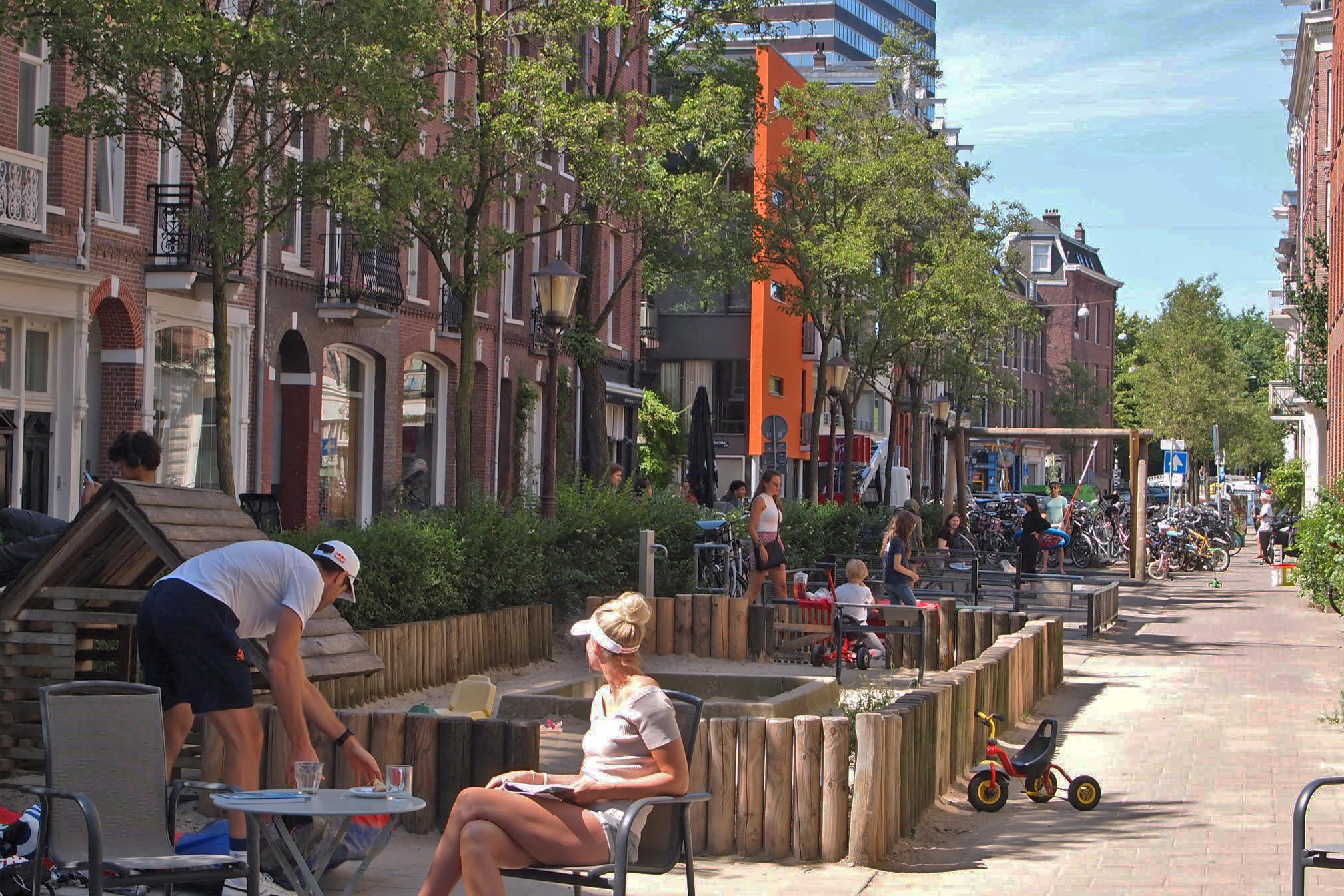
Redesigning streets and inspiring social connection
Fortunately, I didn’t have to travel far before finding my first source of inspiration right here in my neighbourhood. Hemonystraat, in De Pijp, is fairly typical for Amsterdam: a quiet, residential street that serves only as a destination car traffic. This is facilitated in part by a modal filter half-way along the street that features a cycleway and children’s playground. In fact, this playground is part of a legacy of speelstraten, or ‘play streets’ in De Pijp, now a now a common feature across the city and introduced as a result of children’s activism in the 1970s. Mark Wagenbuur (@BicycleDutch) has written more about it here, and a wonderful excerpt from a 1972 documentary is available here.
As you can see, the street has become a social space. Children of all ages can play independently in a safe environment while parents can relax and meet neighbours.
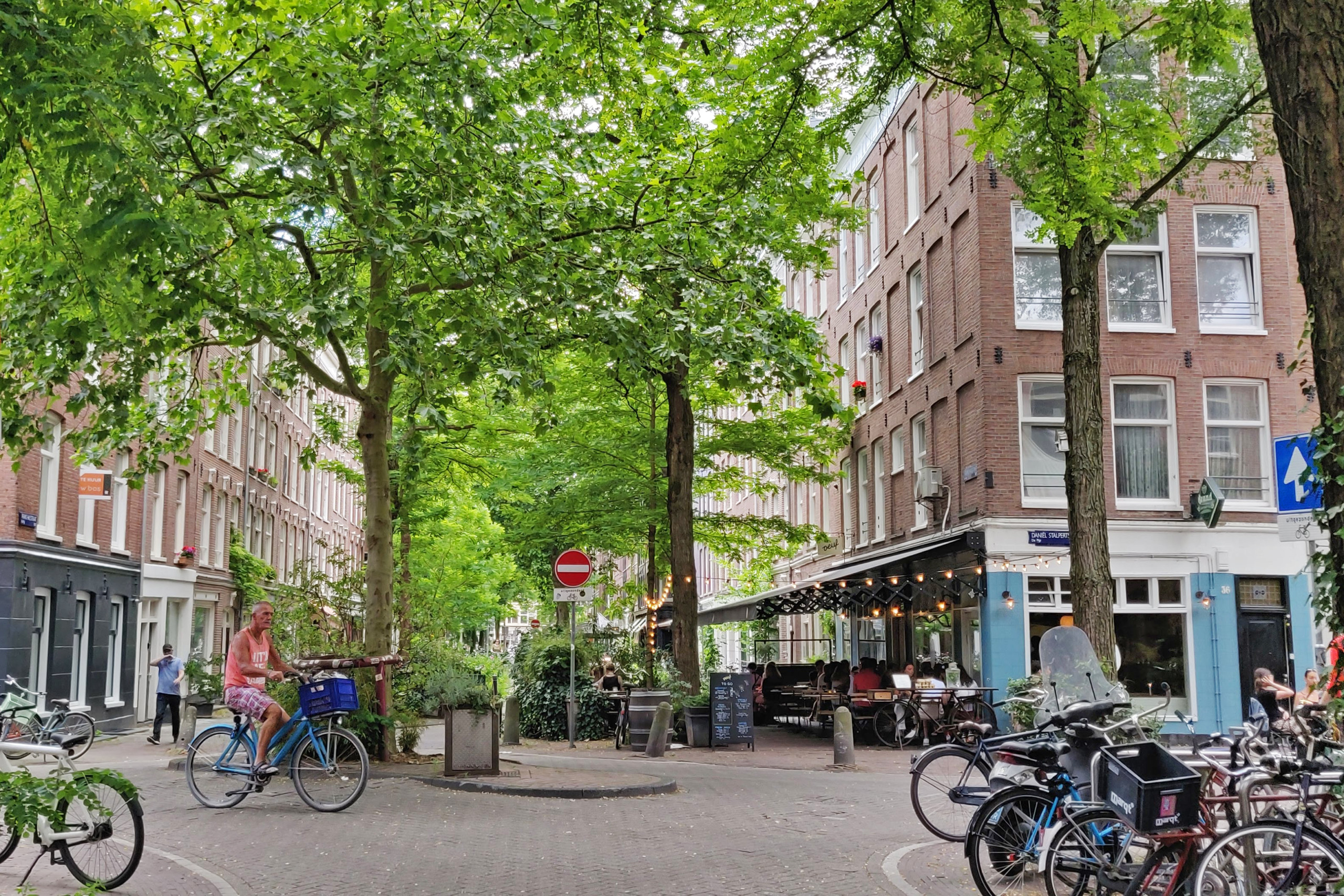
Street life flourishes without traffic
Still in De Pijp, about 1km to the west, the Frans Hals neighbourhood has undergone a dramatic change over the last few years. The construction of a new metro line nearby and a new underground car park provided the opportunity to remove all 600 car parking spaces the street, leaving just a small number of loading bays and accessibility parking. The space remaining, and there was a lot, was left for, well, anything else! In doing so the City has created a platform for discovering just what is possible on our residential streets.
For the time being, the space has been given over to community gardens, restaurant and café space, play areas and cycle parking, while the City engages with the community to develop plans for a longer-term redesign. This process has been documented by Street Films, and can be found, here. In the interim, the streets of Frans Halsbuurt offer residents and visitors alike the opportunity to reclaim the space from motor vehicles and enjoy the streets in a different way. It’s not surprising to find that when that happens, people feel comfortable coming together to sit, talk, even dine out in the public space.
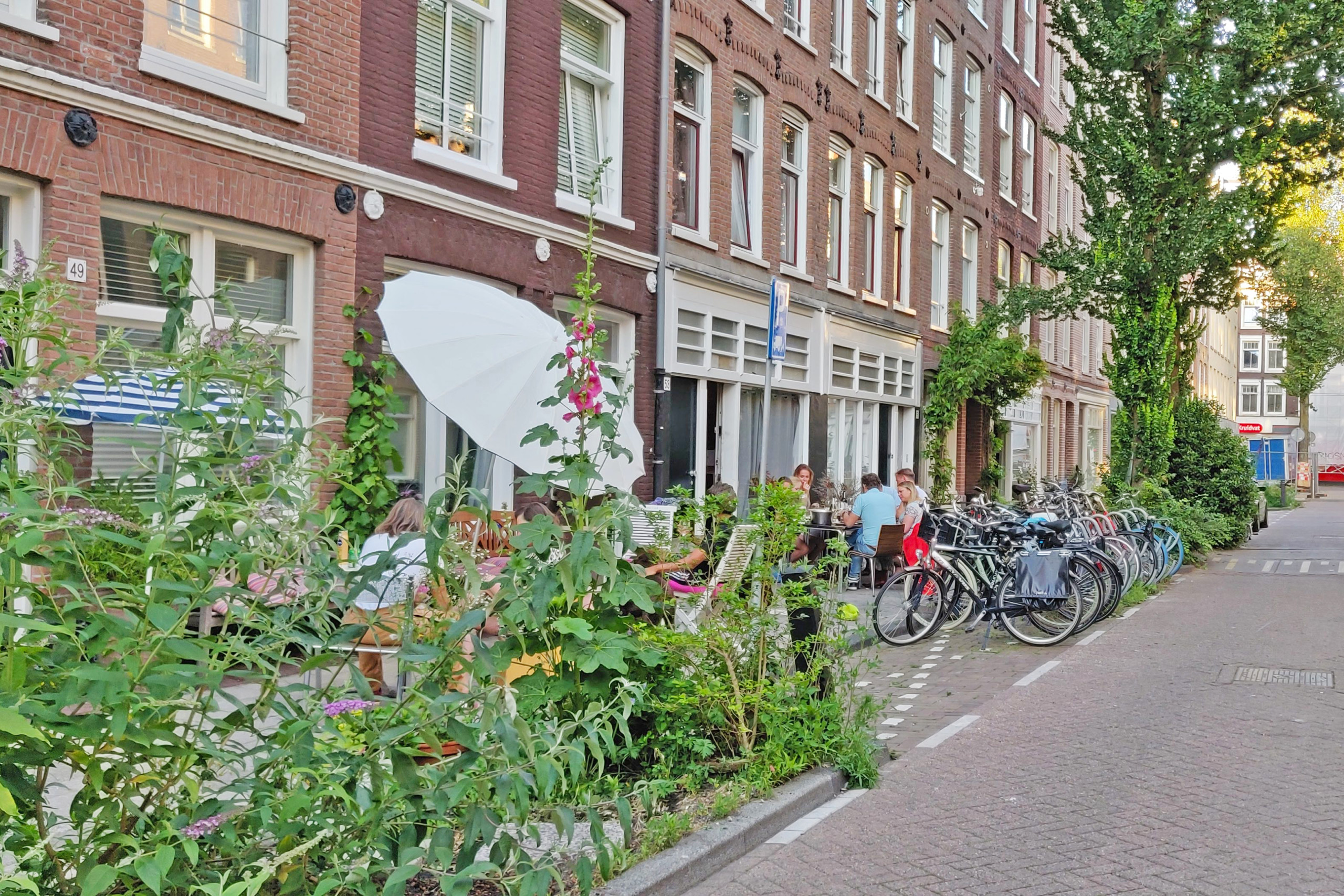
Addressing the climate crisis through street redesign
When travelling through the neighbourhood (which, thanks to Not Just Bikes, you can do remotely!), one of the most striking differences is how green and colourful the streets are, even by Amsterdam’s already verdant standards. Street gardens supplement the existing tradition of geveltuinen, ‘façade gardens’: small gardens in front of properties that the City allows–and even encourages(!)–residents to plant and tend. In a famously low-lying country, and in the face of the global climate crisis, the City is taking rainwater drainage very seriously and this is increasingly seen at street level, with urban greening and water management helping mitigate against the impact of more severe weather.
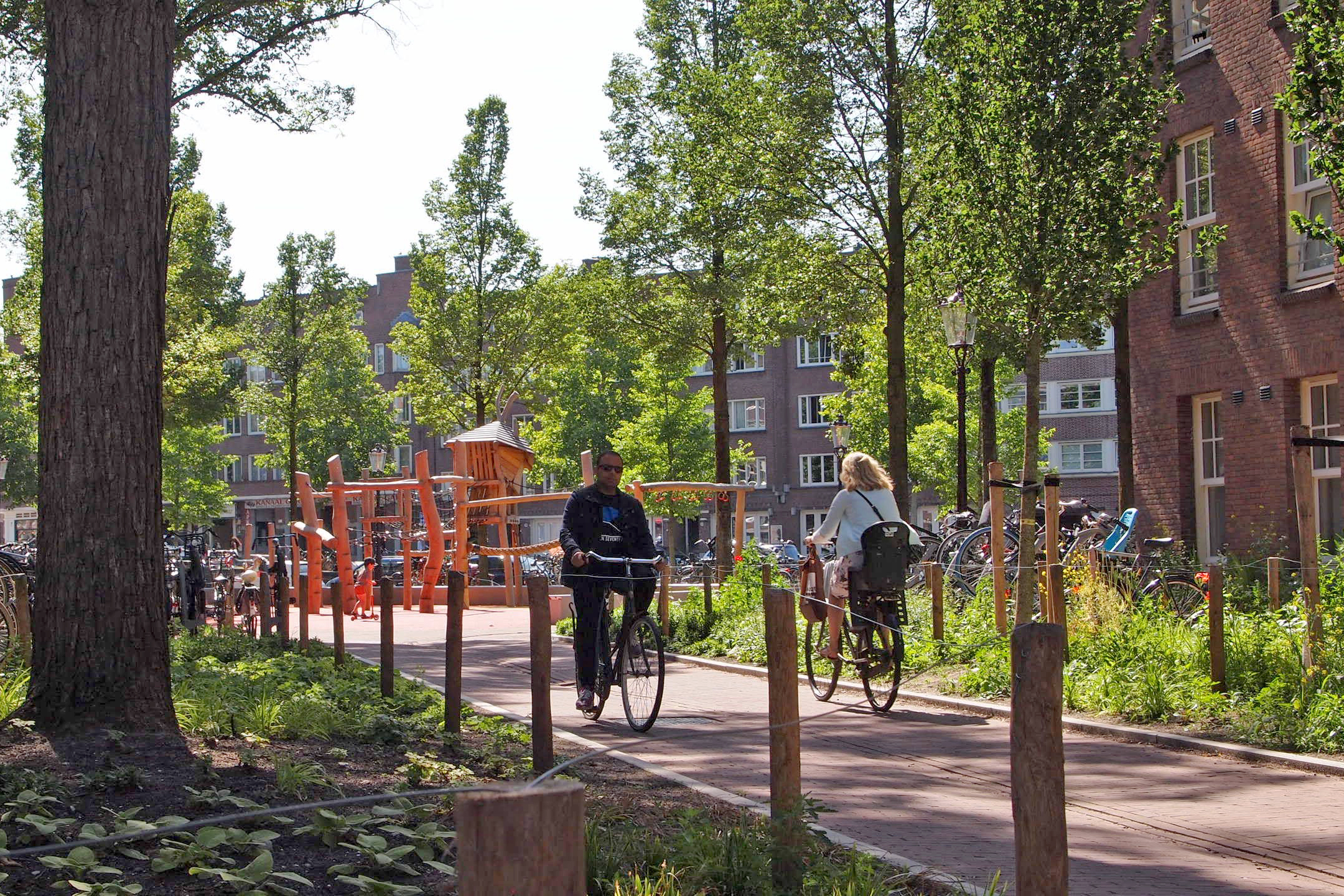
In the west of the city, the scheduled redesign and sewer renewal in the Bellamybuurt provided an opportunity to make it ‘rainproof’. The neighbourhood is particularly low-lying and susceptible to rainwater flooding. Like in other parts of the city, the reallocation of space in the area has sought to reduce car parking, increase pedestrian space and incorporate rain gardens and spaces for children to play.
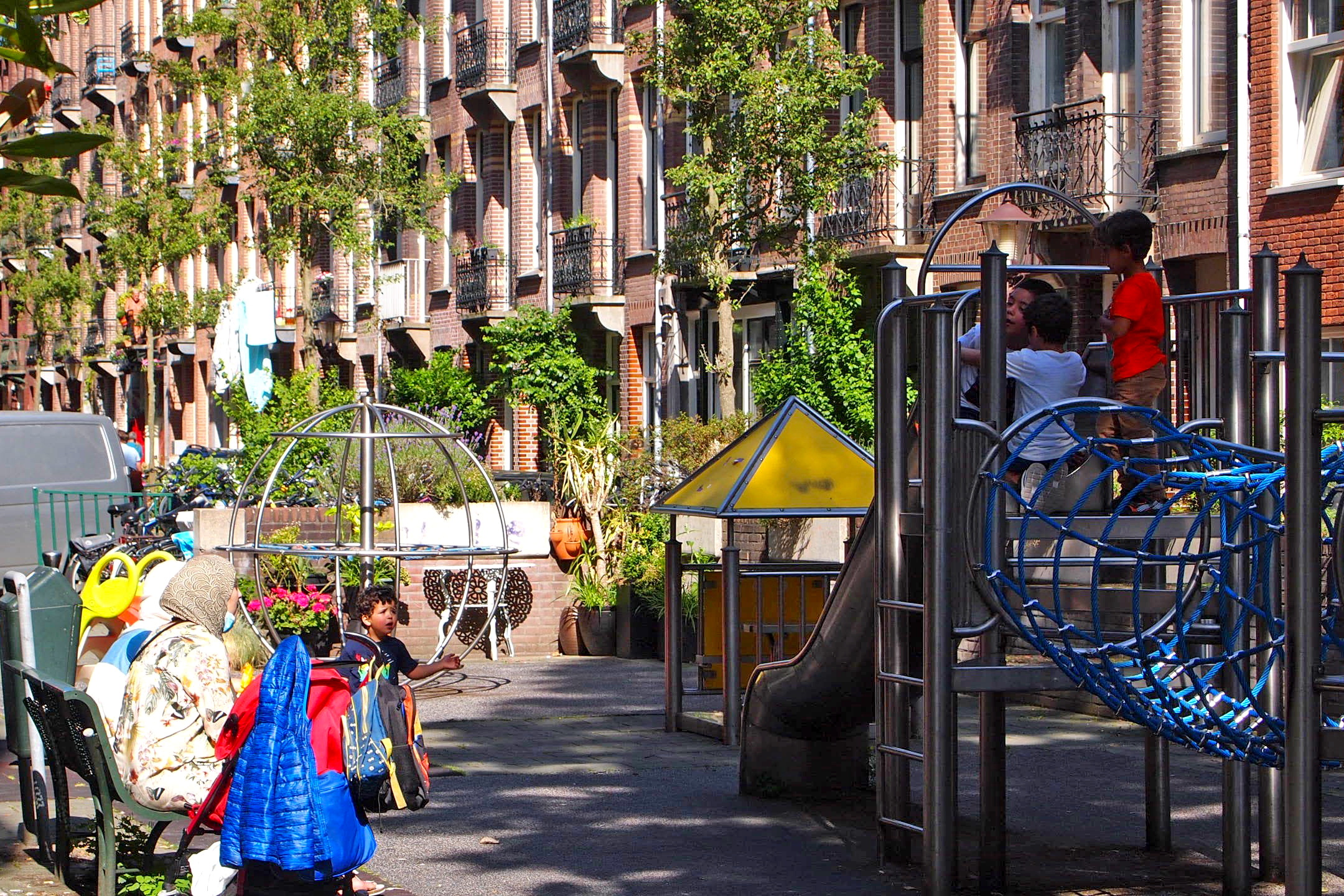
The streets as playgrounds
Providing spaces for children to play is a recurring theme in this whirlwind tour of Amsterdam’s streets. Vrolikstraat in the east of the city has no fewer than three different on-street playgrounds along its length, in a space that most cities would simply use for more car parking. In a city of approximately 850,000 people, where 86% live in flats[i], private outdoor space isn’t available to many. The City has rightly sought to provide opportunities for people to socialise and children to play.
However, that’s only part of the tale. Providing space for recreation and social interaction isn’t unusual, nor specific to Amsterdam. Cities across the world provide this in abundance, in parks, sports courts and public squares. What Amsterdam excels at is enabling these activities to take place in the street. They represent the most significant proportion of all public space in a city, and in Amsterdam make up almost 30% of all land in the urban core[ii]. Moreover, these streets are where people live, work, shop. Through reducing the dominance of motor vehicles, they can also be places to enjoy and spend time.
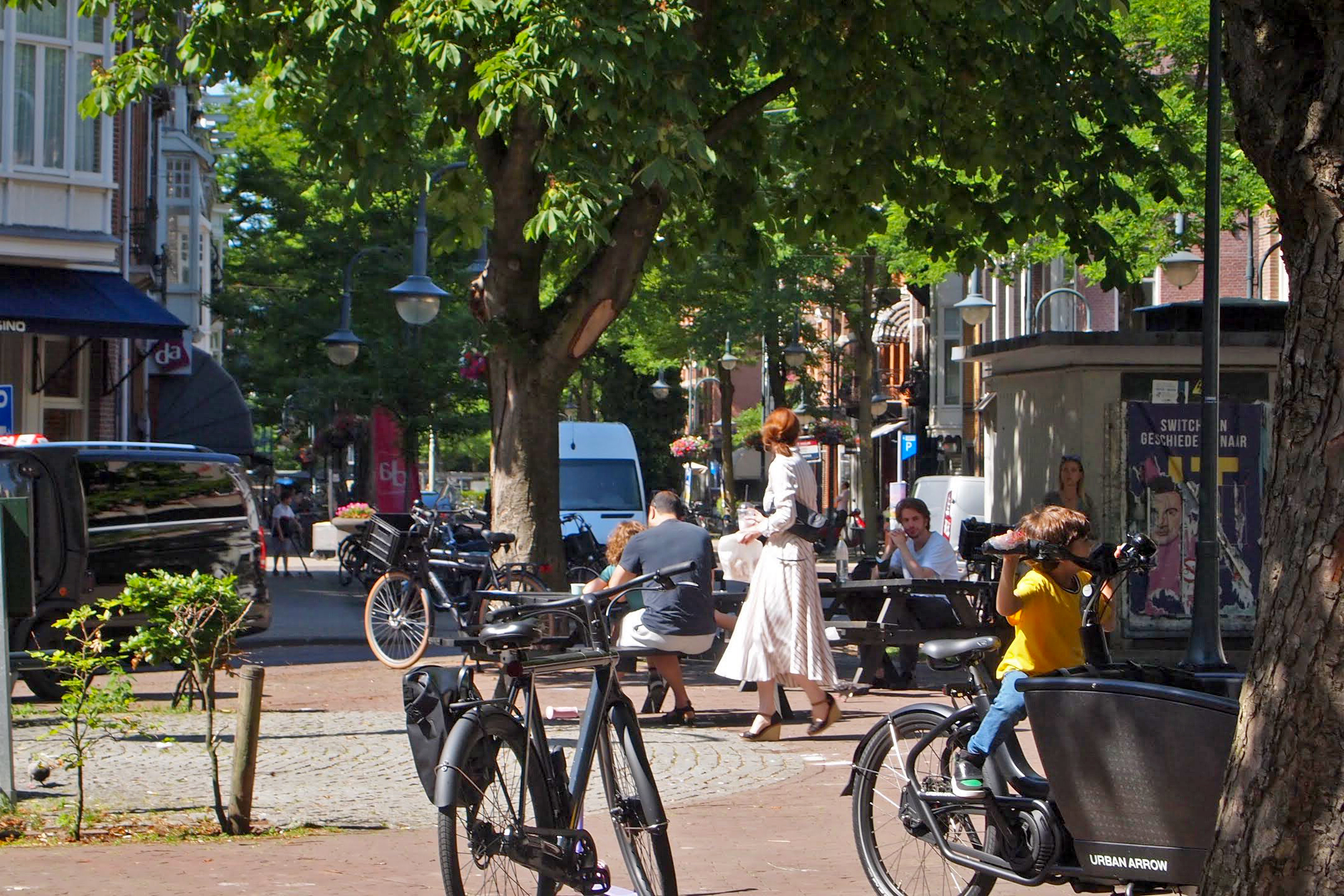
Spaces for connection
For many people recent events have changed how we go about our daily life and for some that has meant questioning how we can experience our environments and interact with each other safely. Amsterdam provides some insight into how the very space outside our homes can be used to enable us to continue to move, but also connect with each other and engage with our surroundings.
Do you have a good example of street transformations from places for cars to public spaces? Please share them with us via Twitter, LinkedIn, Facebook or Instagram or by email directly with Jason.
– – –
[i] https://www.cbs.nl/en-gb/news/2016/14/small-and-relatively-expensive-housing-in-amsterdam#:~:text=Most%20Dutch%20people%20in%20terraced,Amsterdam%20this%20is%2086%20percent.
[ii] https://mirror.unhabitat.org/pmss/listItemDetails.aspx?publicationID=3513#:~:text=The%20Publication%20%22Streets%20as%20Public,%2DHabitat’s%20Executive%20Director%2C%20Dr.&text=Those%20cities%20that%20have%20failed,a%20poorer%20quality%20of%20life%22.

